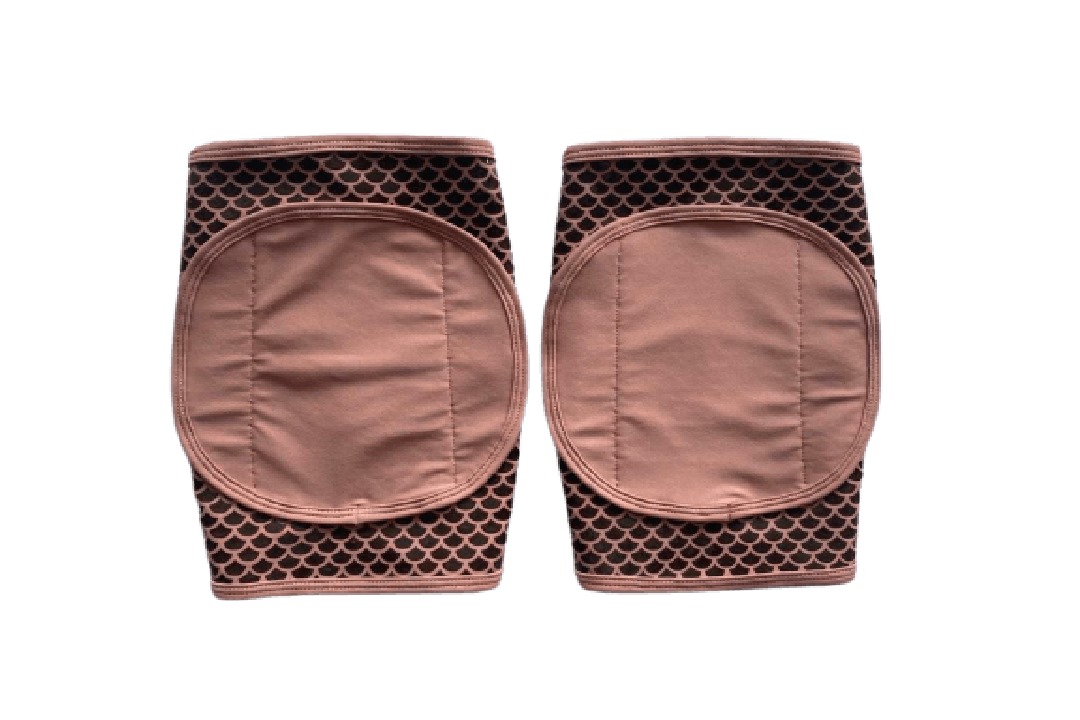HEALTH
Medical Cannabis as an Alternative to Pain-Relievers for Chronic Pain Management

In recent years, medical cannabis has emerged as a significant alternative for chronic pain management, offering a new approach compared to traditional methods. With chronic pain affecting millions worldwide, the search for effective and safer treatments has intensified.
Medical cannabis offers a promising solution, supported by growing evidence of its efficacy in reducing pain where conventional medications fall short.
For patients suffering from chronic pain, it’s now easier than ever to explore medical marijuana in Louisiana.
Apply for a medical marijuana card in Louisiana today at TeleLeaf and discover a new option for managing your chronic pain.
Chronic Pain: An Overview
Millions of people worldwide are affected by chronic pain, a condition that’s far more complex than the acute pain we experience from injuries. Acute pain serves as a warning signal through our nervous system, indicating potential harm, but chronic pain is different.
It continues for an extended period, lasting for weeks, months, or even years after the initial cause. This enduring pain can be due to an early injury, like a sprain in the back, or ongoing issues such as illnesses.
Yet, some patients experience chronic pain without any previous injuries or detectable damage to their bodies.
Impact of Chronic Pain
- Chronic pain patients face daily hurdles that go beyond physical discomfort. Their symptoms often disrupt routine activities, making simple tasks challenging. This constant battle impacts their quality of life, as they have to deal with a world that doesn’t accommodate their specific needs.
- The effects of chronic pain extend into patients’ social lives as well. Engaging in social activities becomes a challenge, with many opting to stay home to not worsen their condition. This isolation can lead to feelings of loneliness and depression, adding an emotional toll to their physical suffering.
- Chronic pain can severely limit a patient’s ability to work. Many find they cannot perform physically demanding jobs or endure long hours sitting at a desk. This limitation affects their financial stability and their sense of purpose and self-worth.
Types of Chronic Pain Treatments
Here are some common types of treatments for chronic pain:
- Pain relievers: Over-the-counter (OTC) medications like acetaminophen, ibuprofen or nonsteroidal anti-inflammatory drugs (NSAIDs) can help manage mild to moderate pain.
- Cognitive-behavioral therapy (CBT): Helps patients manage pain by changing thoughts and behaviors related to the patient’s condition.
- Physical Therapy: Customized physical activity and stretching routines can improve strength, flexibility, and mobility, reducing pain and preventing further deterioration.
Limitations of Traditional Pain Relievers
Traditional pain relievers have been the go-to for managing pain. However, they come with several limitations that are important to consider:
- Patients report that traditional pain medications sometimes only dull the pain rather than eliminate it.
- The use of conventional medications for pain relief comes with a risk of side effects including nausea, drowsiness, and constipation.
- Over time, patients using traditional pain relievers may develop tolerance. This means they need higher doses for the same level of pain relief.
- Due to their availability over-the-counter or through prescriptions, there is a risk of overuse or misuse, especially in cases of chronic pain where long-term use is common.
Benefits of Using Medical Cannabis for Chronic Pain
Using medical cannabis for chronic pain offers a range of benefits that can significantly improve the lives of patients suffering from persistent discomfort.
Here are some key advantages:
1. Pain Reduction
Medical cannabis has shown significant promise in reducing chronic pain. Studies indicate that cannabinoids, the active compounds in cannabis, can interact with the body’s endocannabinoid system to reduce pain levels.
This effect makes medical cannabis a great option for those who have found little relief from traditional pain relievers.
Patients report a decrease in their pain symptoms after using medicinal cannabis. This improvement allows for better daily functioning and quality of life.
2. Improved Sleep
Many patients suffering from chronic pain struggle with sleep disturbances. Medical cannabis use has been associated with improved sleep patterns.
By reducing pain, patients find it easier to fall asleep and stay asleep longer. This restorative sleep is important for the body’s healing processes and overall well-being.
3. Enhanced Quality of Life
The impact of chronic pain extends beyond physical discomfort, affecting mental health and emotional well-being. Medicinal cannabis has demonstrated improvements in patients’ overall quality of life.
Patients often report feeling more relaxed and less anxious, attributed directly to the therapeutic effects of medical cannabis.
4. Reduced Inflammation
Chronic inflammation is a common cause of persistent pain, and cannabinoids help reduce inflammation throughout the body. This reduces pain and addresses one of the underlying causes of discomfort.
Patients benefit from not just symptomatic relief but also from a treatment that targets the root cause of their pain. This dual action makes medical cannabis an effective tool in comprehensive pain management strategies.
Final Thoughts
More and more people are turning to medical cannabis as an alternative for chronic pain management. This is because it can offer relief when traditional painkillers may be ineffective or lead to undesirable side effects.
It’s important to talk to a healthcare professional who understands medical cannabis well to create a treatment plan that’s right for you.
HEALTH
Complete Information About NS Horse Screen

Introduction to NS Horse Screen
Keeping horses healthy is a top priority for horse owners and caretakers. However, despite their best efforts, equine health issues can arise unexpectedly. This is where NS Horse Screen comes into play. NS Horse Screen is a cutting-edge diagnostic tool tailored specifically for horses, enabling early detection of various health issues. In this comprehensive guide, we’ll explore the ins and outs of NS Horse Screen, its importance, functionality, benefits, and much more.
Importance of Screening for Equine Health
Regular health screening is vital for maintaining the well-being and performance of horses. Unlike humans, horses can’t communicate their discomfort or ailments verbally, making it challenging for caretakers to identify health issues promptly. Early detection through screening allows for timely intervention, preventing minor problems from escalating into more serious conditions. Moreover, preventive care is often more cost-effective and less invasive than treating advanced ailments.
What is NS Horse Screen?
NS Horse Screen is a state-of-the-art diagnostic tool specifically designed for equine health screening. It employs advanced technology to detect a wide range of health issues in horses, ranging from metabolic disorders to infectious diseases. Developed by a team of veterinary experts, N,S Horse Screen offers unparalleled accuracy and efficiency in diagnosing equine health problems.
How Does NS Horse Screen Work?
N,S Horse Screen works by analyzing various biological markers present in a horse’s blood sample. These markers provide valuable insights into the horse’s overall health status, including any underlying conditions or abnormalities. The screening process is non-invasive and can be performed quickly and conveniently at a veterinary clinic or through a mobile screening service. Once the sample is collected, it is analyzed using sophisticated diagnostic equipment to generate comprehensive reports.
Benefits of NS Horse Screen
N,S Horse Screen offers several advantages over traditional equine health screening methods. Firstly, it provides rapid results, allowing for prompt intervention and treatment if necessary. Additionally, N,S Horse Screen is highly accurate, minimizing the risk of false positives or negatives. Furthermore, it is a non-invasive procedure that causes minimal discomfort to the horse, ensuring a stress-free experience. Overall, NS Horse Screens enables proactive management of equine health, enhancing the well-being and longevity of horses.
ALSO READ: WHISPERS OF NATURE: THE AUTOBÀ CHRONICLES
Common Equine Health Issues Detected by NS Horse Screen
NS Horse Screen is capable of detecting a wide range of health issues prevalent in horses. Some common conditions identified through NS Horse Screens include metabolic disorders like insulin resistance and equine metabolic syndrome, infectious diseases such as equine influenza and strangles, and organ dysfunction like liver or kidney abnormalities. Early detection of these conditions allows for timely treatment and management, preventing complications and improving prognosis.
How to Prepare for NS Horse Screen
Preparing a horse for N,S Horse Screen involves simple steps to ensure accurate and reliable results. Firstly, it’s essential to fast the horse for a specified period before the screening to obtain accurate blood sample results. Additionally, ensuring the horse is calm and relaxed during the screening process can minimize stress and anxiety, facilitating a smoother experience. Horse owners should also provide relevant medical history and information to the screening facility for comprehensive analysis.
The Screening Process Explained
The NS Horse Screens process typically begins with the collection of a blood sample from the horse. This sample is then analyzed using specialized equipment capable of detecting various biomarkers indicative of different health conditions. The results are compiled into a detailed report, providing insights into the horse’s overall health status. Veterinarians interpret these results and recommend appropriate action based on the findings, which may include dietary changes, medication, or further diagnostic tests.
Understanding NS Horse Screen Results
Interpreting NS Horse Screen results requires veterinary expertise to accurately assess the horse’s health status. The report may contain information on blood parameters, organ function, and specific markers indicative of certain health conditions. Veterinarians analyze these results in conjunction with the horse’s medical history and clinical signs to formulate a comprehensive treatment plan. Clear communication between the veterinarian and horse owner is essential for understanding the results and implementing necessary interventions.
Frequency of Screening
The frequency of NS Horse Screens sessions depends on various factors, including the horse’s age, health status, and lifestyle. Generally, annual screenings are recommended for adult horses to monitor their overall health and detect any emerging issues. However, horses with pre-existing health conditions or those at higher risk may require more frequent screenings. Veterinarians can provide personalized recommendations based on individual horse needs and circumstances.
Cost of NS Horse Screen
The cost of NS Horse Screen varies depending on factors such as the screening facility, location, and additional services included. While the initial investment may seem significant, the long-term benefits of early detection and prevention outweigh the cost. Moreover, compared to the expenses associated with treating advanced health conditions, NS Horse Screens is a cost-effective preventive measure that ultimately saves money and improves horse welfare.
ALSO READ: EXPLORING THE NUTRITIONAL VALUE OF WELLHEALTHORGANIC BUFFALO MILK TAG
Comparing NS Horse Screen with Traditional Methods
Compared to traditional equine health screening methods such as physical examination and single-parameter blood tests, NS Horse screening offers several advantages. Traditional methods often rely on subjective observations and may miss underlying health issues. In contrast, NS Horse Screens provides comprehensive insights into multiple aspects of equine health, enhancing diagnostic accuracy and efficiency. Additionally, NS Horse Screens can detect health conditions in their early stages, allowing for timely intervention and improved outcomes.
Testimonials from Horse Owners
Real-life testimonials from horse owners who have utilized N,S Horse Screen attest to its effectiveness and reliability. Many owners praise the convenience and peace of mind provided by N,S Horse Screen, knowing they are taking proactive steps to safeguard their horse’s health. Positive outcomes, such as early detection of health issues and successful treatment interventions, further highlight the value of N,S Horse Screen in equine healthcare management.
Conclusion
In conclusion, NS Horse Screen is a groundbreaking diagnostic tool that revolutionizes equine health management. By enabling early detection of various health issues, NS Horse Screens empowers horse owners to take proactive measures to safeguard their horse’s well-being. With its accuracy, efficiency, and non-invasive nature, NS Horse Screens sets a new standard in equine health screening, ensuring horses lead healthy and fulfilling lives.
ALSO READ: THE ORGANIC DIFFERENCE: WELLHEALTHORGANIC VITAMIN B12 FOR A HEALTHIER YOU
FAQs about NS Horse Screen
What makes N,S Horse Screen unique compared to other equine health screening methods?
N,S Horse Screen offers comprehensive analysis using advanced technology, ensuring early detection of various health issues with high accuracy.
Is NS Horse Screen suitable for horses of all ages and breeds?
Yes, N,S Horse Screen is suitable for horses of all ages and breeds, providing valuable insights into their health status.
Can NS Horse Screen detect rare or obscure equine health conditions?
Yes, N,S Horse Screen is capable of detecting a wide range of health conditions, including rare or obscure ones, through comprehensive analysis.
Are there any risks or side effects associated with N,S Horse Screen?
N,S Horse Screen is a non-invasive procedure with minimal risks or side effects. However, some horses may experience mild discomfort during blood sample collection.
How can I schedule an NS Horse Screen session for my horse?
You can schedule an N,S Horse Screen session through your veterinarian or a certified screening facility. They will guide you through the process and answer any questions you may have.
HEALTH
Knee Pads for Pole Dancing: Features of Choosing for Professional Dancers

Pole dancing has evolved into a demanding sport that requires a combination of flexibility, strength, and control. For professional dancers, protection during intense training sessions is just as essential as technique. One of the most crucial accessories for safety and performance enhancement is the knee pad. The right pair can make the difference between smooth movement and painful bruises. Understanding how to select the best knee pads for pole dancing ensures both comfort and confidence during every spin, slide, and drop.
Why Knee Pads Are Essential for Pole Dancing
Knee pads are not just for beginners. Even experienced pole dancers rely on them to protect joints from impact and friction burns. The repetitive contact with hard surfaces and the pole itself can lead to discomfort or even long-term injuries if proper protection isn’t used. Professional-grade knee pads are designed to absorb shock while maintaining a sleek, flexible fit that allows dancers to transition seamlessly from floorwork to pole tricks. Unlike typical sports knee pads, those made for pole dancing feature a balance between grip and glide. Dancers need to maintain contact with the floor during choreography but also require traction to hold positions. This is why materials matter — from soft neoprene blends to high-density foam padding — each element contributes to both protection and mobility. An excellent example of high-quality pole dance protection can be found in the grip enhanced knee pads from QueenWear, designed specifically for dancers who value durability and functionality in every movement. These pads combine advanced cushioning with a secure grip surface, ensuring dancers can move freely without compromising safety.
Key Features to Look For in Professional Knee Pads
When choosing knee pads for pole dancing, professional performers should consider several critical factors. First is fit and flexibility — pads that are too tight can restrict movement, while loose ones can slip during routines. A contoured, anatomical design allows the knee pad to move naturally with the body, providing continuous coverage throughout all stages of motion.
Next, consider the level of grip. Some routines demand more floor traction, while others need smoother slides for artistic effect. The ideal knee pad offers interchangeable or dual-surface options, allowing dancers to adjust to different choreography needs. Breathable materials are also key; since pole dance sessions can be intense, sweat-wicking fabrics help maintain comfort during long rehearsals. Aesthetic value is another overlooked but important aspect. Dancers often perform in front of audiences, and knee pads should complement the costume rather than distract from it. Modern designs now offer stylish cuts and colors that merge seamlessly with pole wear outfits, making them both practical and visually appealing. For those building a complete pole dance wardrobe, it’s worth noting that stylish and durable dancewear can also be found at queenwearOfficial, where function meets fashion for every level of performer.
How to Choose Based on Skill and Style
Professional dancers often have different needs depending on their discipline. Contemporary pole artists who combine acrobatics with expressive floorwork may prefer softer padding with maximum flexibility. Exotic pole dancers, on the other hand, usually favor knee pads with stronger grip for better control during transitions and body rolls. Beginners should focus on protection and comfort first, while advanced dancers may prioritize thin, low-profile pads that provide freedom of movement and enhance the aesthetic flow of their performance. In addition, dancers should test their pads in motion before committing to a specific model. Practicing spins, drops, and crawls helps determine whether the padding thickness and grip meet personal comfort and performance standards. Regular maintenance, such as cleaning and checking for wear, will extend the lifespan of the pads and keep them hygienic for studio use.
Choosing knee pads for pole dancing is not only about safety — it’s about optimizing artistry. With the right pair, every dancer can train harder, perform longer, and express movement with confidence and grace.
HEALTH
BCBS of TX + HSA: The Perfect Pair for Affordable Healthcare Coverage

As healthcare costs continue to rise in 2025, Texas residents and businesses are seeking innovative ways to manage expenses without sacrificing quality coverage. Pairing BCBS of TX with HSA Insurance offers a powerful solution, combining the reliability of Blue Cross Blue Shield’s extensive network with the tax advantages and flexibility of a Health Savings Account (HSA). This combination is particularly appealing for individuals, families, and small businesses in Texas looking to optimize healthcare spending while maintaining access to top-tier providers. This article explores why this pairing is ideal, how it works, and practical steps to maximize its benefits.
Dive deeper—this related read builds on what you just discovered
Understanding BCBS of Texas High Deductible Plans
Blue Cross Blue Shield of Texas (BCBS of TX) offers a range of high-deductible health plans (HDHPs) that qualify for HSA use, making them a cornerstone of cost-effective healthcare. For 2025, IRS guidelines define HDHPs as plans with minimum deductibles of $1,650 for individuals and $3,300 for families, with out-of-pocket maximums capped at $8,050 and $16,100, respectively. BCBS of TX plans, such as the Blue Advantage HMO or Blue Choice PPO, meet these criteria, offering access to over 50,000 providers across Texas and streamlined claims processing.
A key feature of BCBS HDHPs is their coverage of preventive care at 100% before the deductible is met. This includes annual checkups, vaccinations, and screenings like mammograms, ensuring Texans can prioritize wellness without upfront costs. Premiums for these plans are typically 20-40% lower than traditional low-deductible plans, with monthly costs for a family averaging $500-$700 compared to $800-$1,000 for non-HDHPs, based on 2025 market data. This reduction frees up funds for HSA contributions, creating a financial buffer for out-of-pocket expenses.
BCBS of TX also offers robust telehealth services and prescription drug coverage, which pair well with HSAs for managing routine costs. The plans’ flexibility across urban and rural Texas ensures accessibility, whether in Houston or smaller communities. For small businesses or individuals, exploring options through BCBS of TX provides a tailored approach to affordable coverage.
Why Adding an HSA Can Cut Your Out-of-Pocket Costs
An HSA transforms how Texans manage healthcare expenses by offering a triple tax advantage: contributions are tax-deductible, funds grow tax-free, and withdrawals for qualified medical expenses—like copays, prescriptions, or dental care—are tax-free. In 2025, individuals can contribute up to $4,300, families up to $8,550, with an additional $1,000 catch-up for those 55 and older. For a family in a 22% tax bracket, maxing out an HSA saves approximately $1,880 in federal taxes, plus potential state tax reductions.
Pairing an HSA with a BCBS of TX HDHP amplifies savings. The lower premiums of HDHPs—often 30% less than traditional plans—allow individuals or employers to fund HSAs with the difference. For example, a family saving $300 monthly on premiums could redirect $3,600 annually to an HSA, covering most or all of their deductible. Studies show HSA users spend 10-15% less on healthcare due to price shopping, such as choosing generic drugs or negotiating provider rates.
HSA for America Blog also offer long-term benefits. Unlike FSAs, funds roll over indefinitely and can be invested in stocks, bonds, or mutual funds, similar to a 401(k). For instance, a 40-year-old contributing $4,000 annually at a 5% return could amass over $150,000 by age 65, per financial projections. This makes HSAs a dual-purpose tool: immediate expense coverage and future financial security. For Texans with BCBS plans, HSAs provide a safety net for deductibles while preserving access to BCBS’s extensive network.
How to Combine BCBS and HSA Benefits
Integrating a BCBS of TX HDHP with an HSA is straightforward and maximizes both coverage and savings:
- Enroll in a BCBS HDHP: Confirm the plan meets HSA requirements. Use BCBS of TX resources or a broker to select a plan suited to your needs, considering network size and telehealth options.
- Open an HSA: Choose a provider like Fidelity, HealthEquity, or a local bank offering no-fee accounts with investment options. Link the HSA to your BCBS plan for seamless expense tracking.
- Fund the Account: Contribute via payroll deductions (pre-tax for employees) or direct deposits. Employers can match contributions, enhancing benefits. For example, a $2,000 employer contribution saves $440 in employee taxes (22% bracket) and $610 in employer payroll taxes.
- Use HSA Funds: Pay for qualified expenses—copays, prescriptions, or even LASIK—using an HSA debit card or reimbursement. BCBS covers post-deductible costs, ensuring comprehensive care.
- Monitor and Invest: Track expenses via HSA apps and invest surplus funds for growth. Unused funds remain yours, unlike traditional plan benefits.
For setup guidance, HSA for America offers tools like calculators and expert consultations to simplify the process. Small businesses can streamline group HSAs, while individuals can explore plans tailored to Texas’s diverse healthcare landscape.
Tips for Managing Your HSA Efficiently
Maximizing an HSA with a BCBS of TX plan requires strategic management:
- Maximize Contributions: Contribute the full $4,300/$8,550 limit if possible to maximize tax savings. Even partial contributions, like $100/month, build a buffer.
- Invest Early: Many HSA providers offer investment options after a minimum balance (e.g., $1,000). A diversified portfolio can yield 4-6% annually, compounding over time.
- Track Expenses: Use HSA apps or online portals to log qualified expenses, ensuring compliance with IRS rules. Keep receipts for audits.
- Leverage Preventive Care: BCBS HDHPs cover screenings and vaccines pre-deductible, reducing HSA withdrawals for routine care.
- Plan for the Future: After age 65, HSA funds can cover Medicare premiums (not Medigap) or non-medical expenses with only income tax, no penalty.
- Seek Expert Guidance: Resources like HSA for America provide free quotes, webinars, and advisors to optimize your HSA strategy.
Regularly review your HSA balance and healthcare needs during open enrollment to adjust contributions or investments. For Texans, this ensures alignment with BCBS’s robust coverage, from specialists in Dallas to rural clinics.
Conclusion
Pairing BCBS of TX with HSA Insurance is a smart strategy for affordable healthcare in 2025. The combination leverages BCBS’s trusted network and low-premium HDHPs with HSA’s tax advantages and flexibility, offering Texans financial control and peace of mind. Whether you’re an individual, family, or small business owner, this approach reduces out-of-pocket costs while maintaining access to quality care. Explore options with HSA for America to customize your plan and start saving today.
Don’t miss our top pick—featured content worth your time

 GENERAL4 months ago
GENERAL4 months ago5 Factors That Affect Tattoo Removal Success

 ENTERTAINMENT3 days ago
ENTERTAINMENT3 days agoExploring the Kristen Archives: A Treasure Trove of Erotica and More

 LIFESTYLE8 months ago
LIFESTYLE8 months agoThe Disciplinary Wives Club: Spanking for Love, Not Punishment

 TECHNOLOGY8 months ago
TECHNOLOGY8 months agoBlog Arcy Art: Where Architecture Meets Art

 LIFESTYLE1 month ago
LIFESTYLE1 month agoWho Is Sandra Orlow?

 ENTERTAINMENT10 months ago
ENTERTAINMENT10 months agoThe Ultimate Guide to Shillong Teer Hit Number: How to Predict Your Next Win

 LIFESTYLE4 weeks ago
LIFESTYLE4 weeks agoWho Is Wife Crazy Stacie

 LIFESTYLE3 weeks ago
LIFESTYLE3 weeks agoBerniece Julien: The Private Life of Tyson Beckford’s Partner









